Today Current Affairs: 28th May 2022 for UPSC IAS exams, State PSC exams, SSC CGL, State SSC, RRB, Railways, Banking Exam & IBPS, etc
Table of Contents
National Achievement Survey (NAS)-2021:

The Ministry of Education released the National Achievement Survey (NAS) 2021 report.
- The Triennial Survey was conducted in November 2021.
- About 34 lakh students of 1.18 lakh schools in 720 districts from both rural and urban areas have participated in NAS 2021.
- It is a nationwide survey to assess the learning outcomes and health of the education system.
Highlights of the NAS 2021:
- The national average percentage of students for class third was 59%, which declined by 10% to 49% in class fifth.
- It further declined to 41.9% in class eight and then 37.8% in class 10.
- The performance recorded a decline in almost all subjects.
- For instance, the mathematics score nationally was 57% in class third, dropping by almost 10% to 44% in fifth, and to 36% in class eighth, and 32% in class 10th.
- The language score nationally was 62% in class third, and dropped to 52% in class fifth, and to 53% in class eighth.
- For science, the national score declined from 39% in class eighth to 35% in class 10.
- The average performance of schools in rural areas remained “significantly below” those urban areas in same states and union territories (UTs).
- The performance of students from the schedule caste (SC)/ schedule tribe (ST)/ Other Backward Classes (OBC) categories remained lower than that of students from the general category.
- The average performance of girls remained better than the boys in almost all subjects across the classes, both nationally and at state level.
- The perception of students about learning at home during the pandemic when the schools remained closed, and 78% of students termed it as burdensome with a lot of assignments.
- At least 38% of students faced difficulties in learning at home, while 24% said they did not have digital devices at home.
Nirdeshak : Second Of The Four Survey Vessels Project
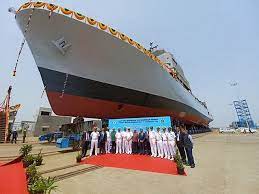
‘Nirdeshak’, the second of the four Survey Vessels (Large) (SVL) Project being built by GRSE in collaboration with L&T shipbuilding for Indian Navy was launched on 26 May 2022 at Kattupalli, Chennai.
- The ship has taken its name from erstwhile Nirdeshak which was also an Indian Naval Survey ship and was decommissioned after 32 years of glorious service in Dec 2014.
- Part construction of three out of four ships of SVL is being undertaken at L&T, Kattupalli as part of collaborative approach between GRSE and L&T shipbuilding.
- The contract for building four SVL ships was signed between MoD and Garden Reach Shipbuilders & Engineers (GRSE), Kolkata on 30 Oct 2018. The first of class ship ‘Sandhayak’ was launched on 05 Dec 2021 at GRSE, Kolkata.
- The SVL ships will replace the existing Sandhayak Class survey ships with new generation hydrographic equipment to collect oceanographic data.
The Report ‘Road Accidents In India 2020 : Transport Research Wing
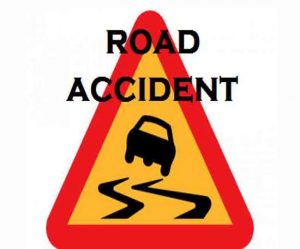
The report ‘Road accidents in India — 2020’, prepared by Transport Research Wing (TRW) of the Ministry of Road Transport and Highways (MoRTH), was released recently.
- Road accidents parameters registered a significant decline in 2020 compared to 2019.
- Total accidents decreased on an average by 18.46 per cent, the number of persons killed decreased by 12.84 per cent and the number of injures decreased by 22.84 per cent over previous year’s average.
- A total of 3,66,138 road accidents have been reported by States and Union Territories (UTs) during the calendar year 2020, which claimed 1,31,714 lives and caused 3, 48,279 injuries.
- The number of road accidents has been on decline since 2016 except for a marginal increase of 0.46 per cent in 2018. For the second consecutive year, the total number of road accidents fatalities has declined in 2020.
- Similarly, the number of persons injured has been on the decline since 2015.
- For the third consecutive year in 2020, the fatal road accident victims largely constitute young people in the productive age groups.
- Young adults in the age group of 18 – 45 years accounted for 69 per cent of victims during 2020.
- People in the working age group of 18 – 60 years share 87.4 per cent of total road accident fatalities.
Green Hydrogen:

At the World Economic Forum in Davos, Switzerland, Minister of Petroleum and Natural Gas Hardeep Singh Puri said India will emerge as the leader of green hydrogen by taking advantage of the current energy crisis across the globe.
- The ‘green’ depends on how the electricity is generated to obtain the hydrogen, which does not emit greenhouse gas when burned.
- Green hydrogen is produced through electrolysis using renewable sources of energy such as solar, wind or hydel power.
- In April Oil India Limited (OIL) commissioned India’s first 99.99% pure green hydrogen plant in eastern Assam’s Jorhat.
- India has just begun to generate green hydrogen with the objective of raising non-fossil energy capacity to 500 gigawatts by 2030.
- The National Hydrogen Mission was launched on August 15, 2021, with a view to cutting down carbon emissions and increasing the use of renewable sources of energy.
- Hydrogen can be ‘grey’ and ‘blue’ too.
- Grey hydrogen is generated through fossil fuels such as coal and gas and currently accounts for 95% of the total production in South Asia.
- Blue hydrogen, too, is produced using electricity generated by burning fossil fuels but with technologies to prevent the carbon released in the process from entering the atmosphere.
Project NIGAH:
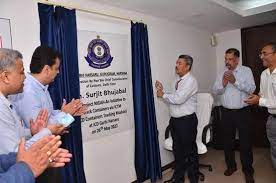
Delhi Customs Zone, a field formation under the Central Board of Indirect Taxes and Customs, inaugurated project ‘NIGAH’ at Inland Container Depots (ICD) Garhi Harsaru, Gurugram.
- Project NIGAH is an initiative to track container by using ICTM (ICD Container Tracking Module) which will help in better visibility of the container movement inside the ICD.
- It will help Customs to expedite long standing containers and monitor timely clearances, thereby enhancing Ease of Doing Business along with ensuring lead preventive checks.
Operation Namkeen:
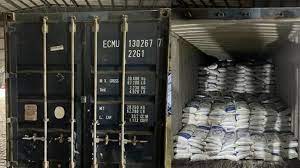
Under Operation Namkeen, the Directorate of Revenue Intelligence (DRI) has recovered 52 kg of cocaine, estimated to be valued at over Rs 500 crore in the international illicit market.
- In order to interdict the narcotic drugs, “Operation Namkeen” was launched by DRI.
- DRI, under the Central Board of Indirect Taxes and Customs (CBIC), Department of Revenue, Ministry of Finance, Government of India, is the apex agency of the Indian Customs in the field of anti-smuggling in India.
- DRI enforces the provisions of the Customs Act, 1962 and over fifty other allied Acts including the Arms Act, NDPS Act, COFEPOSA, Wildlife Act, Antiquities Act etc.
India’s ‘First Lavender Festival’ In Bhaderwah:
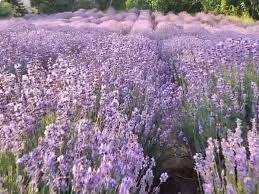
Lavender is a genus of 47 known species of flowering plants in the mint family, Lamiaceae.
- The flowers may be blue, violet or lilac in the wild species, occasionally blackish purple or yellowish.
- Lavender has been used over centuries in traditional medicine and cosmetics.
- Bhaderwah is a town in the district Doda of Jammu.
- India’s first National Institute of High Altitude Medicine is also being built in Bhaderwah.
- Bhaderwah has been described as the birthplace of India’s Purple Revolution.
Demands For a Separate Bhil Pradesh:
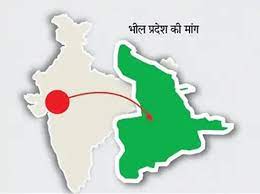
The demands for a “Bhil Pradesh” have of late begun to be raised again.
- Bhil Pradesh is a demand for a separate state for tribal people in western India.
- The demand is to carve out a separate state from 39 districts spread over four states: 16 in Gujarat, 10 in Rajasthan, seven in Madhya Pradesh, and six in Maharashtra.
- Bhil social reformer and spiritual leader Govind Guru first raised the demand for a separate state for tribals back in 1913 after the Mangarh massacre.
- The locals say, after the division of states, tribals in the region were scattered. T
- his suppressed their collective voices. As a result, most schemes related to their development have not benefited them.
- Bhils or Bheels are an Adivasi ethnic group in West India. Bhils are listed as tribal people of the states of Gujarat, Madhya Pradesh, Chhattisgarh, Maharashtra and Rajasthan.
- Bhils are one of the largest tribal group in India. They speak the Bhil languages.
Anangpal Tomar II:
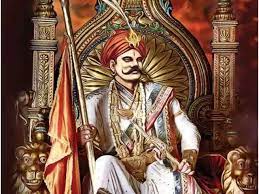
The National Monuments Authority (NMA) (set up for the protection and preservation of monuments under the Ministry of Culture) has planned to erect a statue of Anangpal Tomar II somewhere in central Delhi and develop it into a tourist spot.
- Many believe he was the founder-king of Delhi.
- Anangpal II Belonged to the Tomar dynasty that ruled parts of present-day Delhi and Haryana between the 8th and 12th centuries.
- He was succeeded by his grandson Prithviraj Chauhan, who was defeated by the Ghurid forces in the Battle of Tarain (present-day Haryana) after which the Delhi Sultanate was established in 1192.
- The Tomar dynasty shifted its capital in the 8th century), to Dhillikapuri (Delhi) during the reign of Anangpal II.
- The Vishnu Garud Dhwaj (iron pillar) in the Qutub complex was also brought by King Anangpal Tomar II.
- Tomara dynasty is one of the minor early medieval ruling houses of northern India.
- According to bardic tradition, the dynasty was one of the 36 Rajput tribes.
- The history of the family spans the period between the reign of Anangpal, who founded the city of Delhi in the 11th century CE, and the incorporation of Delhi within the Chauhan (Chahamana) kingdom in 1164.
- Although Delhi subsequently became decisively a part of the Chauhan kingdom, numismatic and comparatively late literary evidence indicates that Tomara kings such as Anangapala and Madanapala continued to rule as feudatories, presumably until the final conquest of Delhi by the Muslims in 1192–93.
‘Tomb Of Sand’ Won International Booker Prize:

Tomb of Sand’, has become the first book written in an Indian language to be awarded the International Booker Prize.
- Originally published in Hindi as Ret Samadhi, the book is written by Author Geetanjali Shree and translated into English by Daisy Rockwell.
- The book narrates the story of an 80-year-old woman who experiences a deep depression after the death of her husband.
- Eventually, she overcomes her depression and decides to visit Pakistan to finally confront the past that she left behind during the Partition.
International Booker Prize:
- The International Booker Prize is awarded annually for a single book, translated into English and published in the UK or Ireland.
- The International Booker Prize began life in 2005 as the Man Booker International Prize.
- This prize aims to encourage more reading of quality fiction from all over the world and has already had an impact on those statistics in the UK.
- The vital work of translators is celebrated, with the £50,000 prize money divided equally between the author and translator.
- Each shortlisted author and translator also receive £2,500.
- Novels and collections of short stories are both eligible.
Annual Survey Of Industries:

Provisional results of the Annual Survey of Industries (ASI) was released by the Ministry of Statistics and Programme Implementation.
- The survey was conducted during April 2021 to January 2022 through ASI Web Portal.
- ASI, the principal source of industrial statistics in India, is the most comprehensive data on organised manufacturing.
- It covers all factories employing 10 or more workers using power and those employing 20 or more workers without using power.
Highlights of the Survey:
- Factories in the country increased by 1.7% year-on-year to 2.46 lakh in 2019-20, employing a total of 1.3 crore workers.
- Gross fixed capital formation, an indicator of investment, grew 20.5% to Rs 4.15 lakh crore in the organised manufacturing sector in 2019-20 as against a growth of 10.2% at Rs 3.44 lakh crore in the previous fiscal.
- This compares with a growth of 1.98% in the number of factories to 2.42 lakh in 2018-19 and a 1.2% growth seen in the post-demonetisation year of 2017-18.
- These numbers assume significance as these are the results for the normal year of 2019-20 before the beginning of the Covid-19 pandemic, which affected employment growth.
- Fixed capital represents the depreciated value of fixed assets owned by the factory as on the closing day of the accounting year and it includes land including lease- hold land, buildings, plant & machinery, furniture and fixtures, transport equipment, water system and roadways and other fixed assets such as hospitals, schools, etc. used for factory workers.
- Employment in the corporate sector, which includes public and private government and non-government companies, increased 5.5% to 97.03 lakh in 2019-20, while that in individual proprietorship declined 3.1% to 11.36 lakh.
- Employment in the partnership sector fell by 11.7% to 18.58 lakh in 2019-20 while that for limited liability partnership grew 42% to 1.22 lakh.
- Among states, Tamil Nadu showed the highest number of employment of workers in 2019-20, followed by Maharashtra and Gujarat.
- Total wages paid to workers grew 6.3% in 2019-20 as against a wage growth of 11.9% in previous fiscal.
- Wages to factory workers in the corporate sector rose by 7.7%in 2019-20.
- Workers figures include all persons employed directly or through any agency whether for wages or not and engaged in any manufacturing process or in cleaning any part of the machinery or premises used for manufacturing process or in any other kind of work connected with the manufacturing process.
Bilateral Security And Defence Cooperation: India-Japan

India and Japan agreed to further enhance Bilateral Security and Defence Cooperation, including in defence manufacturing.
Highlights of the Meeting:
- Both sides should work jointly towards implementing their decision to have 5 trillion yen in public and private investment and financing from Japan to India in the next five years.
- India highlighted the steps taken by it to improve ease of doing business, logistics through the ‘Gati Shakti’ initiative and urged Japan to support greater investments by Japanese companies in India.
- Such investments would help in creating resilient supply chains and would be mutually beneficial.
- India appreciated that Japanese companies are increasing their investments in India and that 24 Japanese companies had successfully applied under the various Production Linked Incentive schemes.
- Both Countries noted the progress in implementation of Mumbai-Ahmedabad High Speed Rail project and welcomed the signing of exchange of notes of the 3rd tranche of loan for this project.
- Agreed to encourage greater collaboration between private sectors of both sides in the development of next generation communication technologies.
- Also agreed to deepen cooperation in the area of Clean Energy including green hydrogen.
- Took note of the progress in implementation of the Specified Skilled Workers (SSW) programme and agreed to further scale up this programme, boosting people to people linkages.
- Concurred that the India-Japan Act East Forum was useful in prioritising development of India’s North East Region.




